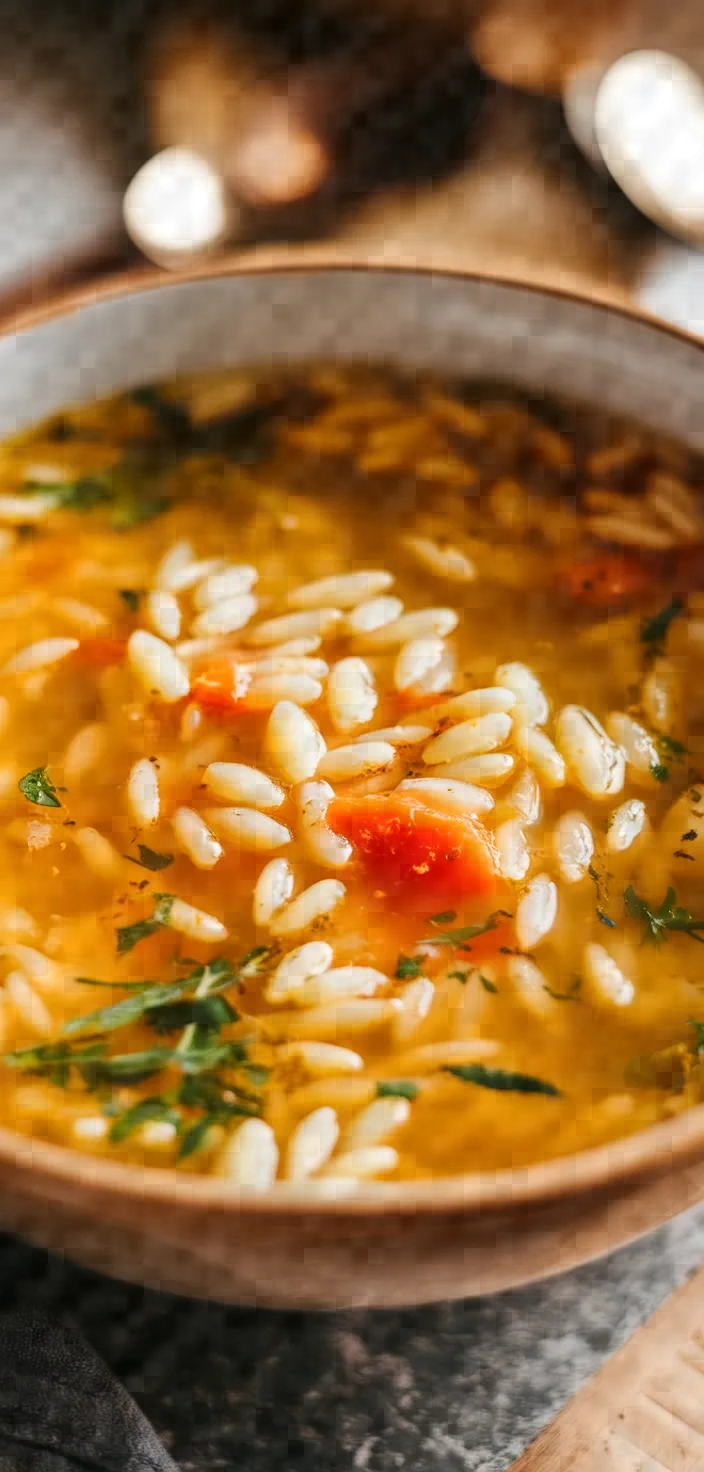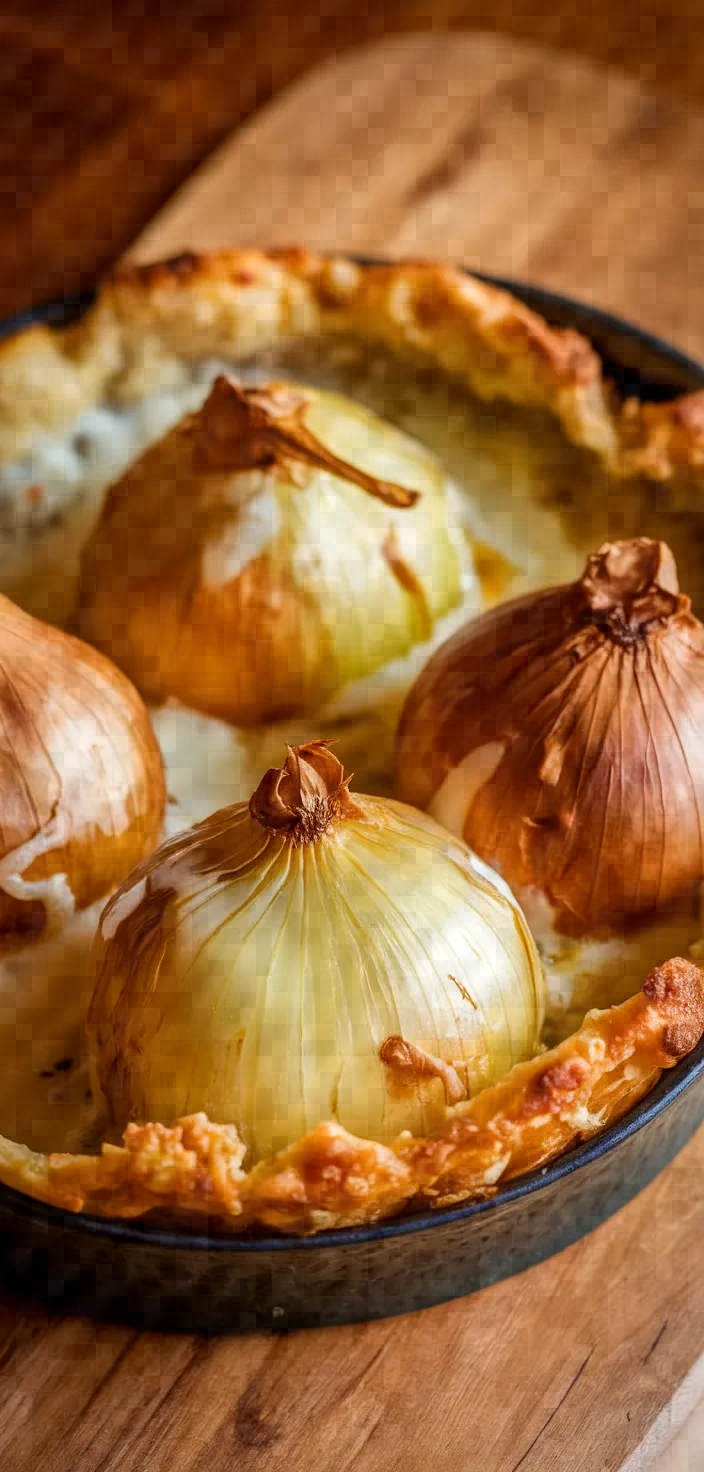I’m about to transform the humble onion into your new favorite side dish—think of it as elevating the everyday into a delightful symphony of caramelized goodness with just a hint of balsamic tang (if you’re feeling fancy). Let’s get roasting!
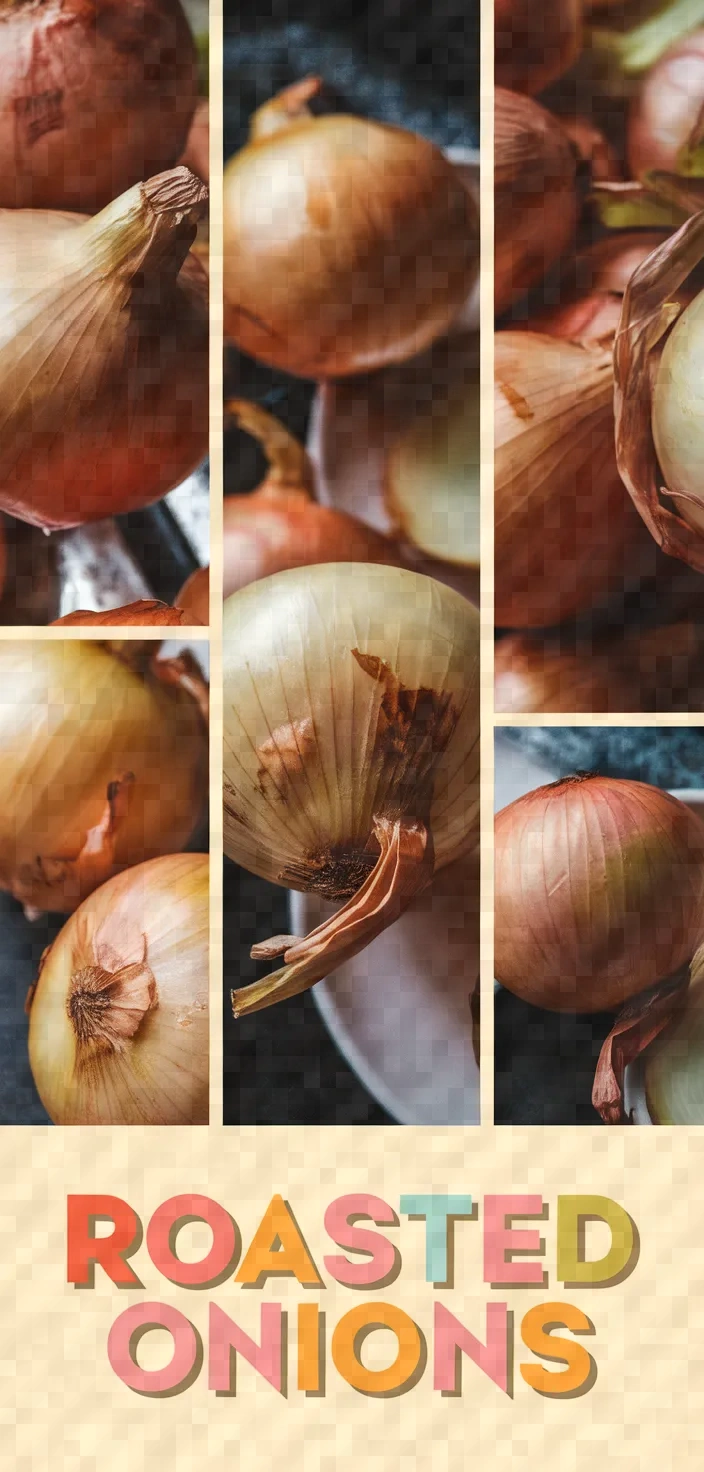
I adore the basic elegance and nutritional value of roasted onions. They require, truly, very little in the way of accompaniments—and in my kitchen, anyway, that means they come together with a drizzle of olive oil, a couple of shakes of salt and pepper, and the optional sweetness of balsamic vinegar, which serves to deepen the flavor even further.
If you want to go (more) gourmet, fresh thyme would push these basic beauties right into the realm of divine.
Ingredients
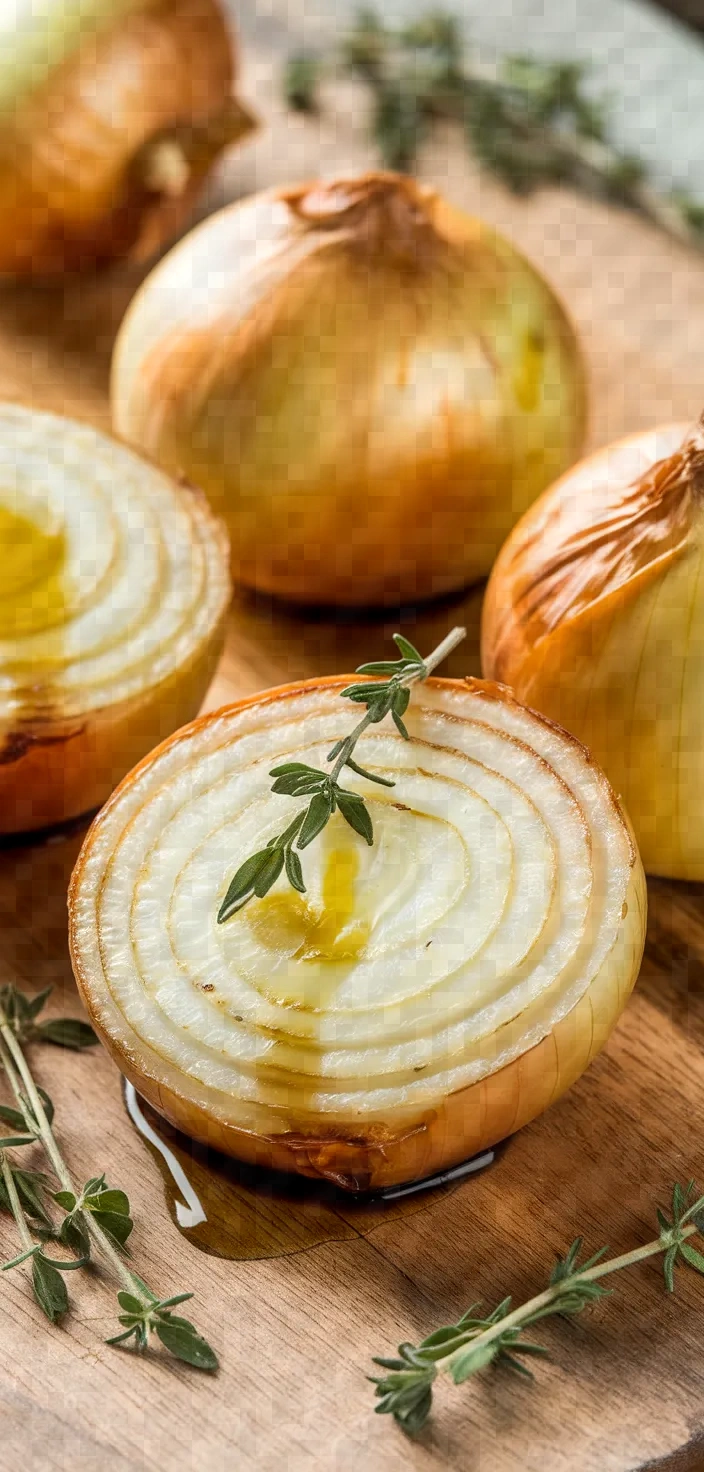
- Onions: Rich in antioxidants; adds sweetness and depth to dishes.
- Olive Oil: Heart-healthy fats; enhances flavor and moisture.
- Salt: Essential mineral; heightens and balances flavors.
- Black Pepper: Adds a subtle heat; boosts overall taste.
- Balsamic Vinegar: Sweet and tangy; optional for depth.
- Fresh Thyme Sprigs: Aromatic herb; elevates with earthy notes.
Ingredient Quantities
- 4 large onions
- 2 tablespoons olive oil
- 1 teaspoon salt
- 1/2 teaspoon black pepper
- 1 tablespoon balsamic vinegar (optional)
- Fresh thyme sprigs (optional)
How to Make this
1. Your oven should be set to a temperature of 400 degrees Fahrenheit or 200 degrees Celsius.
2. Remove the skin from the onions and slice them thickly, about 1/2 inch thick, into rounds or wedges.
3. Arrange the onion slices in a single layer on a large baking sheet.
4. Evenly drizzle the olive oil over the onions.
5. Distribute the salt and black pepper as a seasoning for the onions, making sure they are well and evenly covered.
6. If balsamic vinegar is being used, drizzle it over the onions for added flavor.
7. Gently toss the onions with your hands or a spoon to ensure they have an even coating of oil and seasoning.
This helps with:
1. The onions being tasty.
2. The onions being tender.
3. The onions not being burnt.
8. In the preheated oven, roast the onions for 25 to 30 minutes, stirring halfway through. They should emerge from the oven tender and lightly caramelized.
9. Take the onions out of the oven and allow them to cool for a bit.
10. If you wish, before serving, top with sprigs of fresh thyme. Enjoy it alongside your favorite meals or as a topping over them.
Equipment Needed
1. Oven
2. Large baking sheet
3. Knife
4. Cutting board
5. Measuring spoons
6. Spoon or hands (for tossing)
FAQ
- Can I use any type of onions for this recipe?You can use any kind of onion, including yellow, red, or white, depending on the flavor you like.
- Is it necessary to use balsamic vinegar?Balsamic vinegar is not required. It is not necessary. It adds a sweet and tangy taste that complements the dish, which is still perfectly good without it.
- How do I know when the onions are fully roasted?They are done when they are tender and caramelized on the edges, which usually takes 25-30 minutes in the oven.
- Can I make this dish ahead of time?Certainly, you can prepare roasted onions in advance and keep them in an airtight container in the fridge for up to 3 days. Reheat them in the oven before serving.
- What is a good substitute for fresh thyme?If fresh thyme is not available, you can use dried thyme or even other herbs like rosemary to add a different flavor profile.
- Can I use less olive oil if I’m watching my fat intake?Certainly, you have the option to cut down on the olive oil, but remember, it aids in two ways crucial for the best onion condition—namely, caramelization and moisture control. Onions like to hang out in a pan sans the heavy oil that kind of does too much, but they also like to hang out in a moist environment and not stick to the pan.
- What dishes pair well with roasted onions?Onions that have been roasted can do many things. They can accompany grilled meats, flavor a salad, and even serve as a pizza topping. They are versatile, and they taste good.
Roasted Onions Recipe Substitutions and Variations
Olive Oil: Melted butter or coconut oil can be used as a substitute to provide an alternate flavor in your dish.
Use sea salt or kosher salt to give a particular texture to food.
Black Pepper: For a milder flavor, substitute white pepper; for a little heat, try crushed red pepper flakes.
Balsamic vinegar: Substitute apple cider vinegar or red wine vinegar.
Dried thyme or rosemary can be used if fresh thyme is unavailable.
Pro Tips
1. Caramelization Boost To enhance the caramelization, sprinkle a small amount of sugar over the onions before roasting. This will help them brown nicely and add a touch of sweetness.
2. Uniform Slices Ensure all onion slices are of uniform thickness to promote even cooking. This prevents some slices from burning while others remain undercooked.
3. Vinegar Enhancement If you’re using balsamic vinegar, consider reducing it in a pan first to thicken it slightly. This creates a more intense flavor and ensures it clings better to the onions.
4. Oven Position Place the baking sheet in the middle rack of the oven for even heat distribution. If you notice uneven browning, rotate the pan halfway through the cooking time for consistent results.
5. Herb Infusion For a deeper herb flavor, toss the onions with a few sprigs of thyme before roasting. The heat will release the thyme oils, infusing the onions with a gentle herby aroma. Remove the sprigs before serving if you prefer not to have them as a garnish.
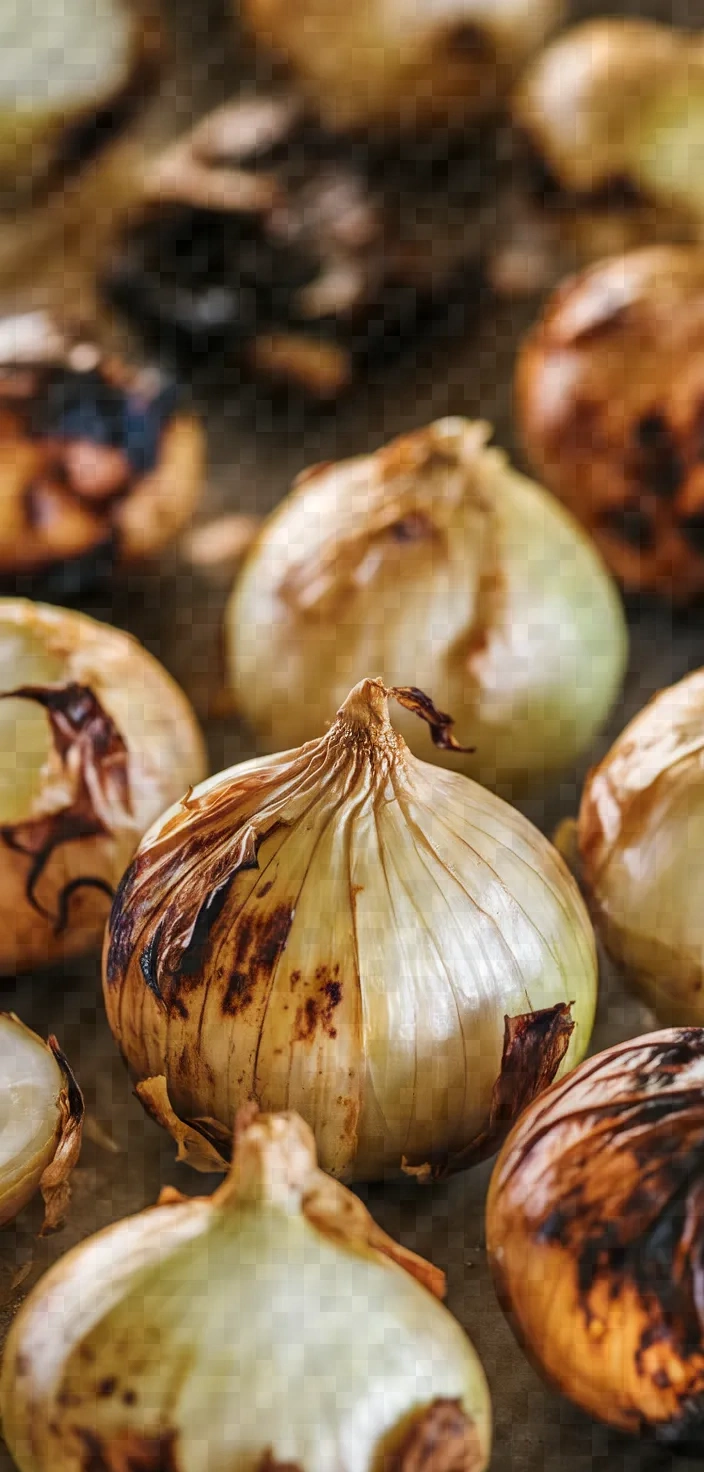
Roasted Onions Recipe
My favorite Roasted Onions Recipe
Equipment Needed:
1. Oven
2. Large baking sheet
3. Knife
4. Cutting board
5. Measuring spoons
6. Spoon or hands (for tossing)
Ingredients:
- 4 large onions
- 2 tablespoons olive oil
- 1 teaspoon salt
- 1/2 teaspoon black pepper
- 1 tablespoon balsamic vinegar (optional)
- Fresh thyme sprigs (optional)
Instructions:
1. Your oven should be set to a temperature of 400 degrees Fahrenheit or 200 degrees Celsius.
2. Remove the skin from the onions and slice them thickly, about 1/2 inch thick, into rounds or wedges.
3. Arrange the onion slices in a single layer on a large baking sheet.
4. Evenly drizzle the olive oil over the onions.
5. Distribute the salt and black pepper as a seasoning for the onions, making sure they are well and evenly covered.
6. If balsamic vinegar is being used, drizzle it over the onions for added flavor.
7. Gently toss the onions with your hands or a spoon to ensure they have an even coating of oil and seasoning.
This helps with:
1. The onions being tasty.
2. The onions being tender.
3. The onions not being burnt.
8. In the preheated oven, roast the onions for 25 to 30 minutes, stirring halfway through. They should emerge from the oven tender and lightly caramelized.
9. Take the onions out of the oven and allow them to cool for a bit.
10. If you wish, before serving, top with sprigs of fresh thyme. Enjoy it alongside your favorite meals or as a topping over them.

